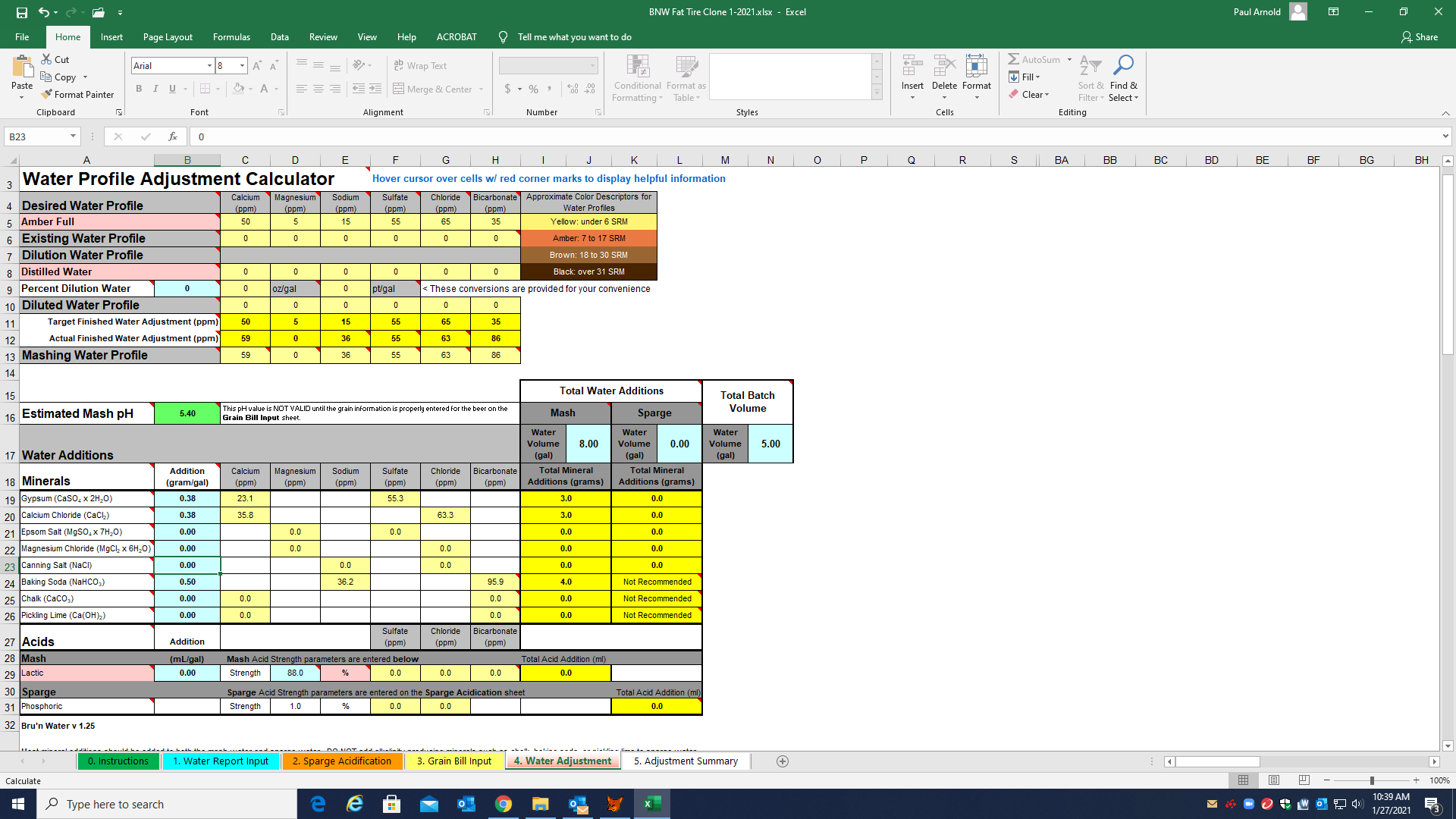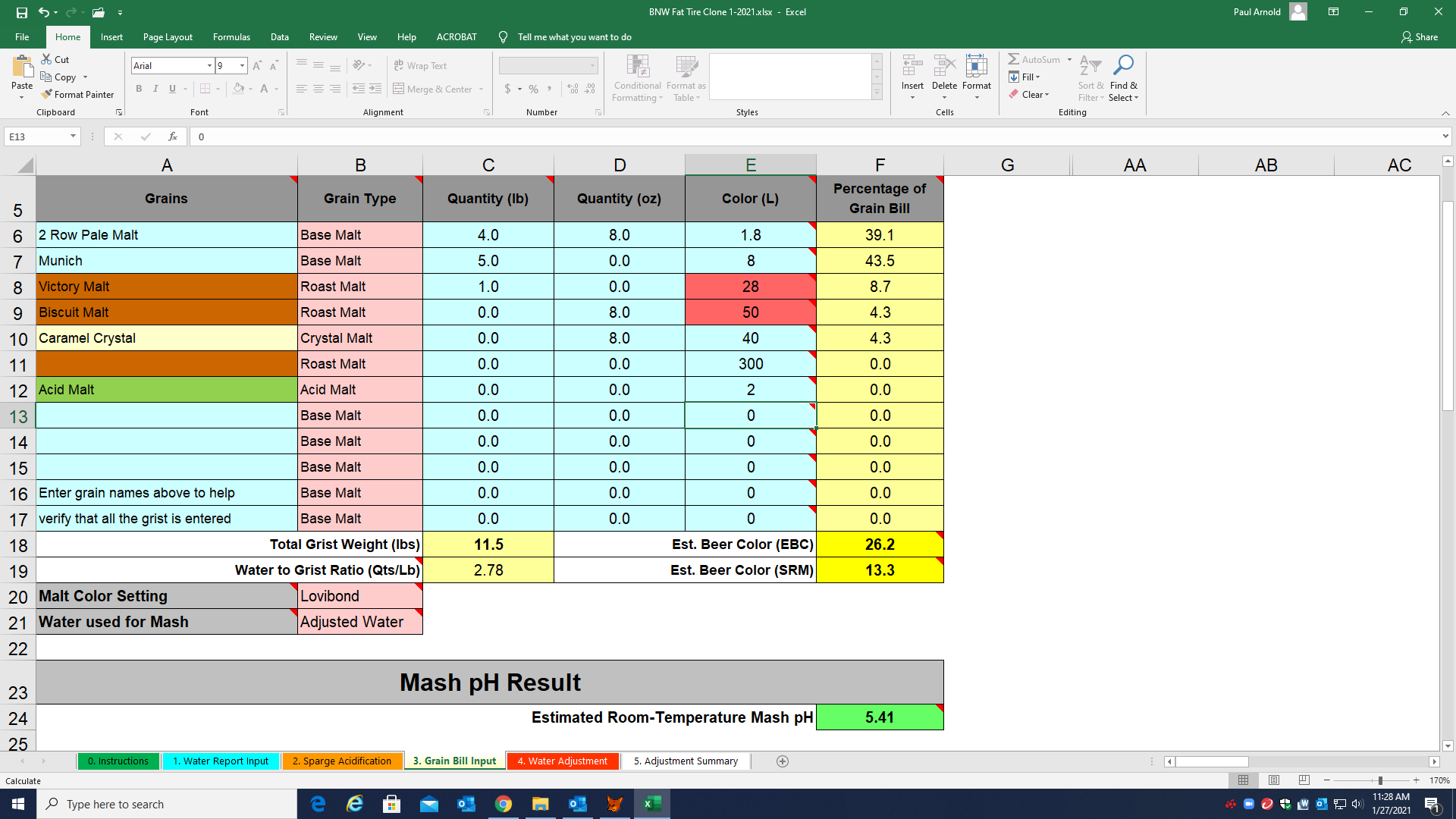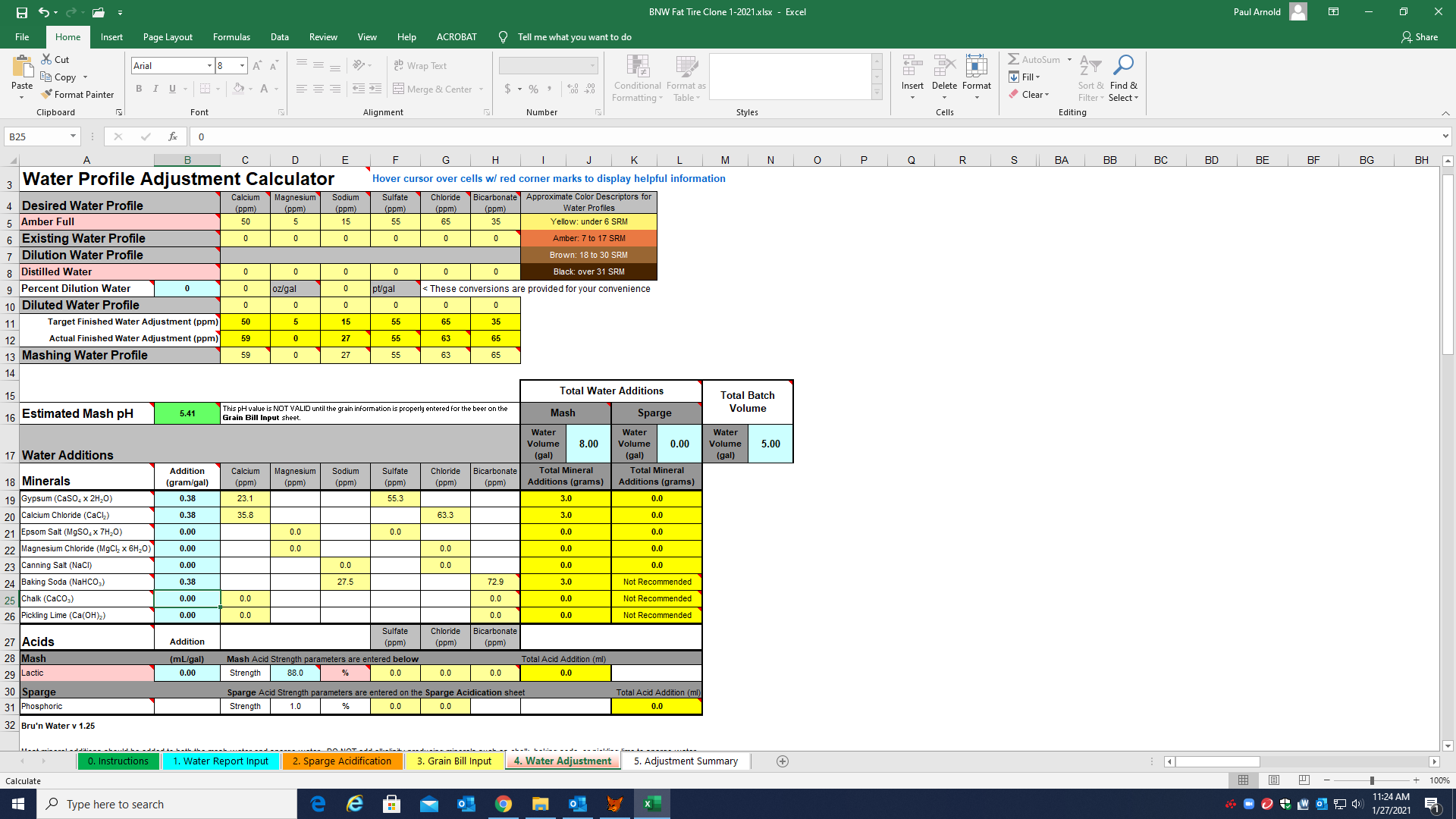Monmouth00
Well-Known Member
- Joined
- Jun 26, 2019
- Messages
- 171
- Reaction score
- 99
Hello All,
I'm just switching over to BIAB after being an extract guy for many, many years. I always used distilled water because I'm not in love with my tap water. I'd like to continue using distilled in my BIAB, and this thread was great for helping me get a baseline for mineral additions: A Brewing Water Chemistry Primer
My first BIAB batch will be a Fat Tire clone, which I thought would be easy. I keep seeing everyone on HBT recommend Bru 'N Water, so I figured I'd give it a shot. Right from the start, it looks like an awesome tool. But, I'm obviously missing something and I can't figure out what.
I've left the Water Report Input zero'd out, as I'm using distilled water. Is this correct?
I've entered my grain bill, including the 2% acidulated mlt, and selected the "Adjusted Water" option.

On the Water Adjustment tab, I've added in what I think are the proper amounts of Calcium Chloride and Gypsum based on the "Brewing Water Chemistry Primer" thread I referenced above. Basically, one tsp of Gypsum and 2 tsp of Calcium Chloride:
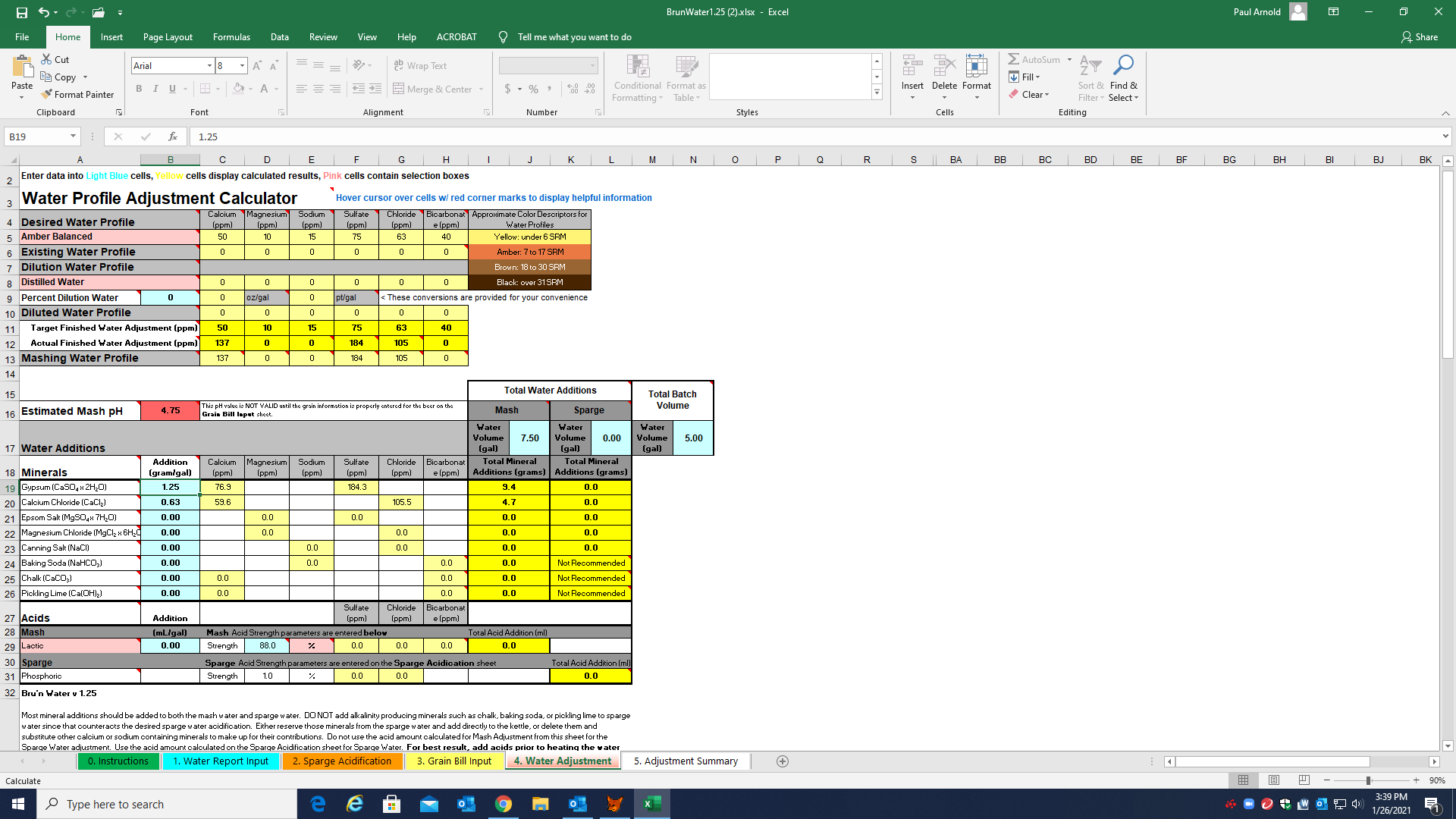
So, why in the world would my mash pH be so low?
I can hit what the recommended pH should be by removing the Calcium Chloride and Gypsum additions, but then I'd just be brewing with plain distilled water, which I;ve repeatedly read is a no-go.
What exactly am I missing in using this spreadsheet? Or is the Water Chemistry post off?
Thanks for your help,
Monmouth00
I'm just switching over to BIAB after being an extract guy for many, many years. I always used distilled water because I'm not in love with my tap water. I'd like to continue using distilled in my BIAB, and this thread was great for helping me get a baseline for mineral additions: A Brewing Water Chemistry Primer
My first BIAB batch will be a Fat Tire clone, which I thought would be easy. I keep seeing everyone on HBT recommend Bru 'N Water, so I figured I'd give it a shot. Right from the start, it looks like an awesome tool. But, I'm obviously missing something and I can't figure out what.
I've left the Water Report Input zero'd out, as I'm using distilled water. Is this correct?
I've entered my grain bill, including the 2% acidulated mlt, and selected the "Adjusted Water" option.

On the Water Adjustment tab, I've added in what I think are the proper amounts of Calcium Chloride and Gypsum based on the "Brewing Water Chemistry Primer" thread I referenced above. Basically, one tsp of Gypsum and 2 tsp of Calcium Chloride:

So, why in the world would my mash pH be so low?
I can hit what the recommended pH should be by removing the Calcium Chloride and Gypsum additions, but then I'd just be brewing with plain distilled water, which I;ve repeatedly read is a no-go.
What exactly am I missing in using this spreadsheet? Or is the Water Chemistry post off?
Thanks for your help,
Monmouth00


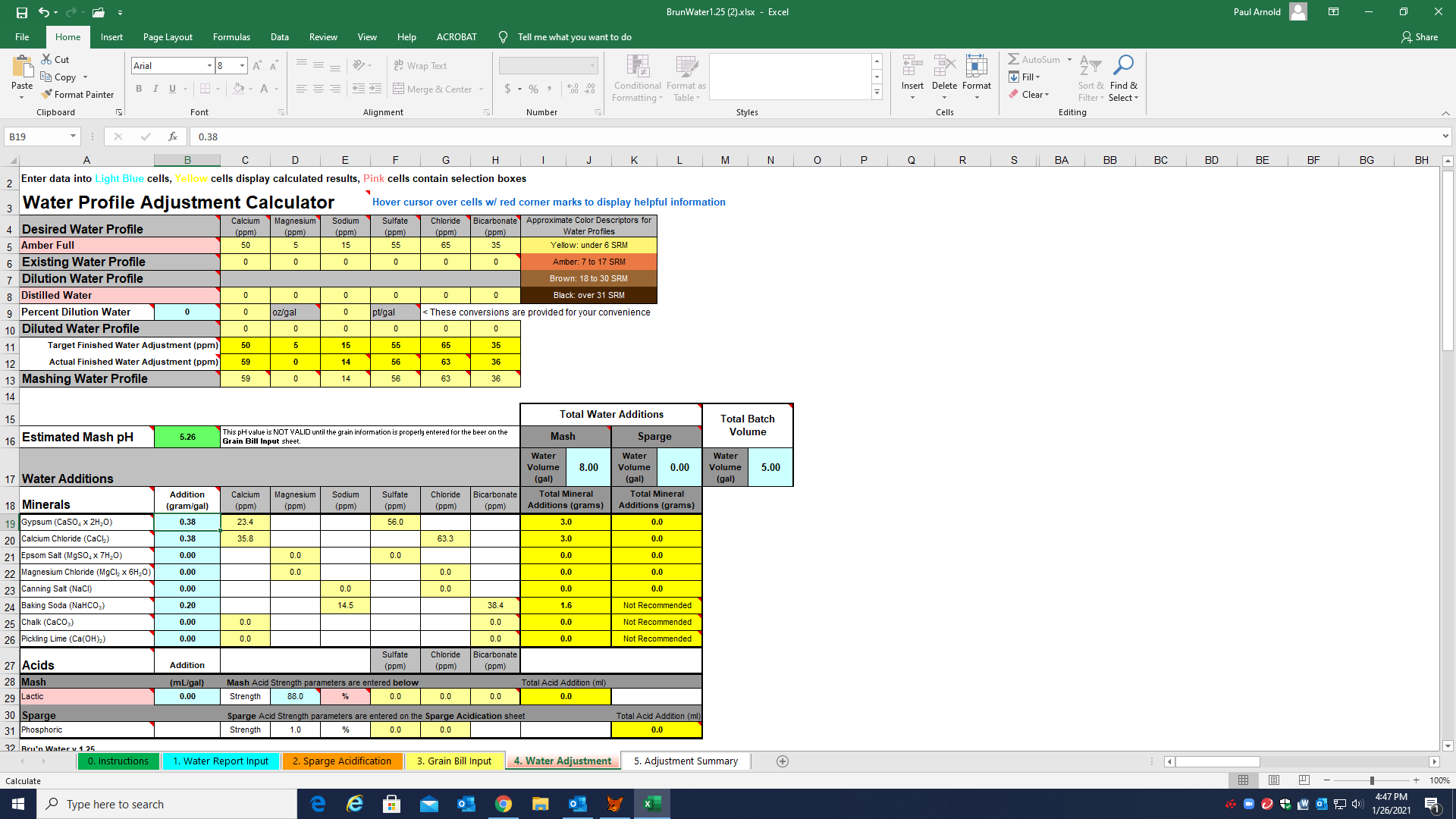



































![Craft A Brew - Safale BE-256 Yeast - Fermentis - Belgian Ale Dry Yeast - For Belgian & Strong Ales - Ingredients for Home Brewing - Beer Making Supplies - [3 Pack]](https://m.media-amazon.com/images/I/51bcKEwQmWL._SL500_.jpg)









